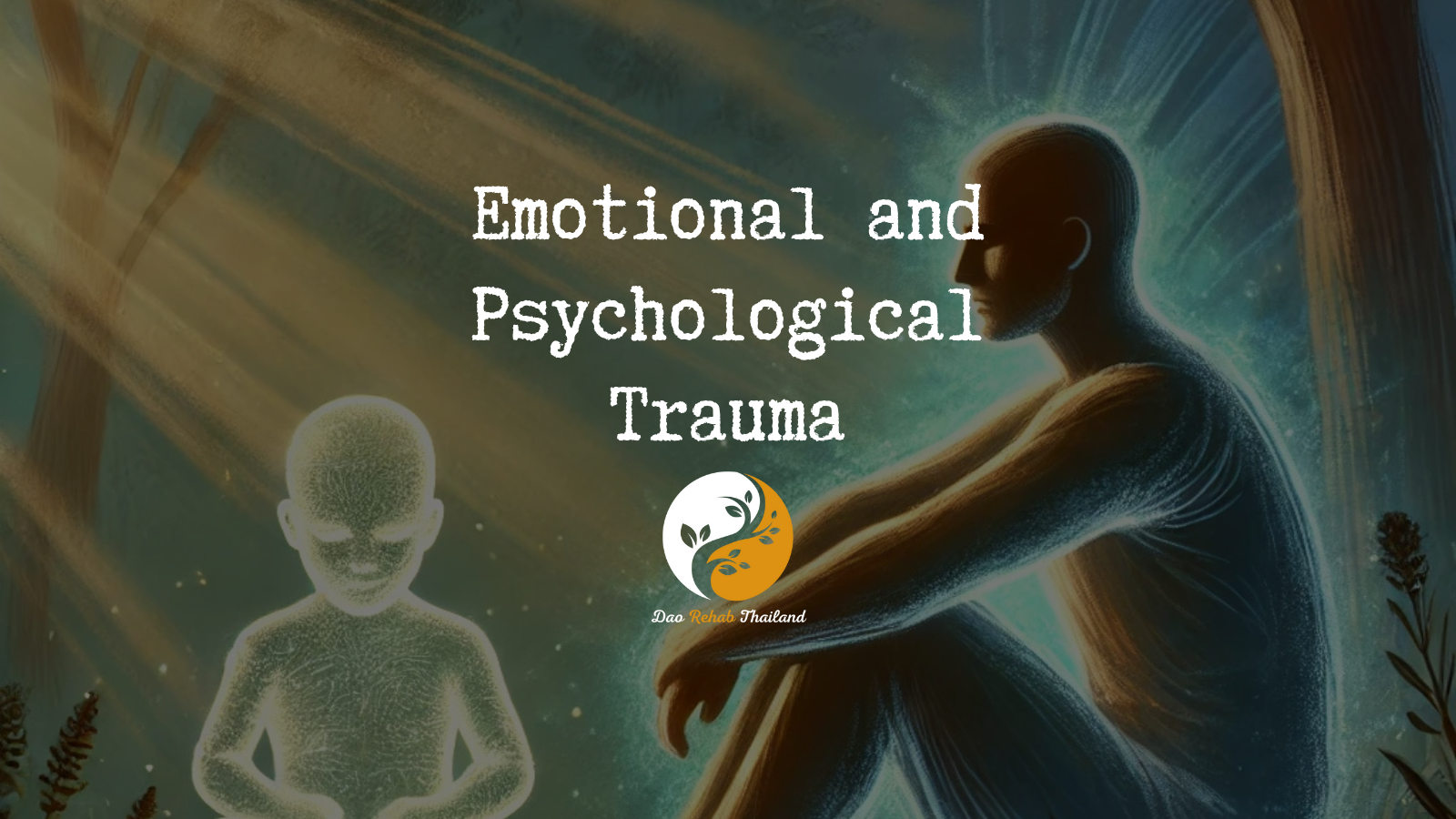
Lustral withdrawal-Holistic rehab in Thailand
Lustral withdrawal
“Turning the impossible into possible”

"Detox from Drugs at a Luxury Holistic Center in Thailand and Israel"

Lustral withdrawal-Holistic rehab in Thailand
Lustral, also known as Sertraline, is a drug from the SRI (selective serotonin reuptake inhibitors) family. The pill is primarily used to treat depression, anxiety, panic, obsessive-compulsive disorder (OCD), and post-traumatic stress disorder (PTSD).
"Holistic Center for Trauma, Addiction, and Mental Imbalance Treatment in Thailand"
“Come to the beginning of your journey to freedom from addiction to alcohol, drugs, and pills, and rediscover your life within the serene embrace of DaoTherapy Rehab in Thailand—where holistic healing meets empowering recovery.”
DaoTherapy Holistic Rehab
Key Elements of Drugs Detox:
Medical Supervision: Drugs detox must be conducted under medical supervision, as the body may experience withdrawal symptoms. These can include nausea, anxiety, muscle aches, and insomnia. A medical team will monitor and manage these symptoms to ensure the patient’s safety and comfort.
Holistic Therapies:
Holistic Therapies: Many detox programs incorporate holistic therapies such as mindfulness, yoga, and meditation to help individuals cope with stress and anxiety during the detox process. These therapies support the mind-body connection and contribute to overall recovery.
Tapering Process
Tapering Process: Drugs detox often involves a gradual tapering of the drug to reduce withdrawal severity. Doctors will slowly decrease the dosage over time to allow the body to adjust to lower levels of the substance.
Psychological Support:
Psychological Support: Like any addiction recovery process, detox from Drugs includes psychological support. This can involve counseling, therapy, or support groups to address the mental and emotional aspects of addiction.
Post-Detox Treatment:
Post-Detox Treatment: After completing detox, continuing treatment is crucial to prevent relapse. This often includes participation in ongoing therapy, group support, and the development of new coping strategies to maintain sobriety.
Withdrawal from Lustral: What you need to know about withdrawal from Lustral, what are the causes of addiction to prescription pills:
The causes of addiction to prescription pills are complex and vary from person to person, and include a combination of genetic, psychological, environmental, biological, and personal factors.
Genetic factors:
Genetic predisposition: Some people are born with a genetic predisposition to addiction. Studies show that there is a genetic inheritance that increases the risk of addiction.
Families with a history of addiction: Those who have parents or first-degree relatives who have struggled with prescription pill addiction may be at higher risk of addiction.
Mercital withdrawal: Psychological factors:
Mental disorders: People who suffer from depression, anxiety, personality disorders, or post-traumatic stress disorder (PTSD) may turn to drugs to cope with the symptoms of these conditions.
Low self-esteem: A sense of low self-esteem can lead to drug use as a way to escape a painful reality or to improve their sense of self-worth.
Stress and Mental Overload: People who experience chronic stress or increased mental overload may use drugs to relieve stress.
Feelings of inferiority and dysfunction are another psychological factor that can contribute to prescription drug addiction. We will detail this in the context of psychological factors for addiction:

contact us
Contact us with your questions
We would love to speak with you! Feel free to reach out with any questions.

get in touch
Schedule a free consultation
Schedule a free consultation with our team and let’s make things happen!
Historical background and development of the lustral
Development and Approval:
Sertraline was developed by Pfizer and patented in 1979.
The drug was first approved for medical use in the United States by the FDA in 1991 for the treatment of depression.
Mechanism of Action:
Loseral works by blocking the reuptake of serotonin in the brain. Serotonin is a neurotransmitter that helps regulate mood, anxiety, and other mental states.
By increasing serotonin levels in the synapses, lustral improves mood and reduces symptoms of depression and anxiety.
Additional Uses:
In addition to depression, the drug has been found to be effective in treating other disorders such as generalized anxiety disorder, post-traumatic stress disorder (PTSD), obsessive-compulsive disorder (OCD), and panic disorder.
Loeseral is also sometimes used to treat other problems such as eating disorders and sleep disorders associated with depression.
Side effects:
lustral may cause side effects such as nausea, dry mouth, dizziness, sleep disturbances, and sweating.
In rarer cases, it may cause more serious disorders such as an increased risk of suicide, especially in young people at the beginning of treatment.
Social and medical impact:
Sertraline is one of the most commonly used medications today for the treatment of depression and anxiety.
Its efficacy and relatively high safety profile have made it a popular choice among doctors and patients.
Over the years, lustral has contributed significantly to improving the quality of life of millions of people worldwide suffering from mental disorders.
Information about Lustral and its mechanism of action
Sertraline is a drug from the SRI (selective serotonin reuptake inhibitor) family, used to treat a wide range of mental disorders, including depression, anxiety, panic disorders, obsessive-compulsive disorder (OCD), and post-traumatic stress disorder (PTSD).
Mechanism of action of Sertraline
Sertraline acts primarily on the serotonin system in the brain. Serotonin is an important neurotransmitter that plays a central role in regulating mood, anxiety, sleep, and other behaviors.
1. Blocking serotonin reuptake:
– Nerve cells in the brain have receptors that are responsible for reabsorbing serotonin after it has been released into the synapses (the spaces between nerve cells). Sertraline works by blocking these receptors.
– When serotonin reuptake is blocked, the level of serotonin in the synapses increases, which increases its effect on the receiving nerve cells.
2. Effect on Mood:
– Increased serotonin levels can improve mood, reduce anxiety, and relieve symptoms of depression and other disorders.
– Increased serotonin can also help regulate sleep, appetite, and other functions related to mood and emotion.
3. Duration of Action:
– Although Losartan begins to act on the serotonin system immediately after administration, its clinical effect on mood and other symptoms can take several weeks to appear.
Medical Uses
Losartan is approved for use in a wide variety of medical conditions:
1. Major Depression:
– Losartan is used to treat major depression, improving mood and reducing symptoms of depression.
2. Anxiety Disorders:
– Lustral is effective in treating generalized anxiety disorder (GAD), panic disorder, and social phobia.
3. Obsessive-compulsive disorder (OCD):
– The drug is used to treat OCD, reducing intrusive thoughts and compulsive behaviors.
4. Post-traumatic stress disorder (PTSD):
– Lustral has been found to be effective in reducing symptoms of PTSD, including flashbacks, anxiety, and sleep disorders.
5. Additional Disorders:
– Lustral is also used to treat other disorders such as body dysmorphic disorder (BDD), and premenstrual dysphoric disorder (PMDD).
Side effects
Like any medicine, Sertraline may cause side effects, which may include:
– Nausea
– Headache
– Dry mouth
– Fatigue or insomnia
– Excessive sweating
– Dizziness
In rare cases, more serious side effects may occur, such as increased suicidal thoughts, especially at the beginning of treatment or when the dose is changed. Therefore, it is important to be closely monitored by your doctor at the beginning of treatment.
Sertraline is a common and effective medication for the treatment of a wide range of mental disorders, and it has a significant impact on the quality of life of many patients.
Sertraline is a widely used and relatively safe medication, but like any medicine, there are risks and warnings that you should be aware of. Here are some of the main risks and warnings associated with the use of Sertraline:
Risks and common side effects
1. Common side effects:
– Nausea: This is especially common at the beginning of treatment.
– Headaches.
– Dry mouth.
– Tiredness or insomnia.
– Excessive sweating.
– Dizziness.
– Loss of appetite.
2. More serious risks:
– Suicidal thoughts: There is an increased risk of suicidal thoughts and behaviors, especially in children, teenagers, and young adults at the beginning of treatment.
– Serotonin syndrome: A rare but dangerous condition that can be caused by excess serotonin in the brain, manifested by symptoms such as confusion, high fever, sweating, tremors, and heart rhythm disorders.
– Sexual side effects: Decreased libido, difficulty reaching orgasm, and erectile dysfunction in men.
3. Rare side effects:
– Severe allergic reaction: Symptoms include rash, itching, swelling (especially of the face/tongue/throat), severe dizziness, and difficulty breathing.
– Eye problems: pain, vision changes, or redness in the eye.
Warnings
1. Stopping treatment:
– Do not stop using Luestrel suddenly without consulting a doctor, as this may cause withdrawal symptoms such as dizziness, nausea, headache, and irritability.
2. Combined use with other drugs:
– Be careful when combining Luestrel with other drugs, especially other antidepressants, painkillers, mood stabilizers, anti-anxiety drugs, and herbal remedies such as St. John’s Wort.
3. Use during pregnancy and breastfeeding:
– The use of Luestrel during pregnancy and breastfeeding requires caution and consultation with a doctor, as the drug can affect the fetus or nursing infant.
4. Existing health problems:
– Patients with liver problems, kidney problems, heart disorders, a history of epilepsy or seizures, and blood disorders should inform their doctor before starting treatment with Luestrel.
5. Effect on driving and operating machinery:
– Luestrel may cause fatigue or dizziness, so caution should be exercised when performing activities that require full alertness, such as driving and operating machinery.
Medical monitoring
It is important to have ongoing medical monitoring during treatment with Luestrel, especially at the beginning of treatment and during changes in dosage. The doctor can monitor the progress of treatment and adjust the dosage as necessary.
Psychological Support:
Psychological Support: Like any addiction recovery process, detox from Subutex includes psychological support. This can involve counseling, therapy, or support groups to address the mental and emotional aspects of addiction.
What is Lustral addiction and what are the withdrawal symptoms?
Sertraline is not traditionally considered an addictive drug, meaning it does not create physical dependence in the same way as opioids or benzodiazepines. However, suddenly stopping the use of Sertraline can cause withdrawal symptoms, also known as discontinuation symptoms.
Addiction to Sertraline
As mentioned, addiction to Sertraline is rare, but there may be cases of psychological dependence, in which the patient feels that they need the drug to function well or feel good.
Withdrawal symptoms from Sertraline
When you stop using Sertraline suddenly or too quickly, withdrawal symptoms can occur. These symptoms may include:
1. Physical symptoms:
– Dizziness
– Nausea
– Headaches
– Fatigue or feeling drowsy
– Excessive sweating
– Flu-like symptoms (such as muscle aches and joint pains)
– Loss of appetite
2. Mental symptoms:
– Irritability
– Increased anxiety
– Mood swings
– Crying fits
– Sleep disturbances (difficulty falling asleep or staying asleep)
– Renewed or increased depression
3. Sensory symptoms:
– Feeling of “electric shocks” in the brain (Brain zaps)
– Vision changes
– Blurring
– Sensitivity to light and noise
How to avoid withdrawal symptoms
To avoid withdrawal symptoms, follow these guidelines:
1. Gradual dose reduction:
– The dose should be reduced gradually And do not stop the medication suddenly. Your doctor may recommend a slow reduction in dosage over several weeks or months.
2. Regular medical monitoring:
– It is important to have regular medical monitoring during the dosage reduction. Your doctor can monitor your symptoms and adjust the rate of reduction as needed.
3. Listen to your body:
– If withdrawal symptoms appear, notify your doctor. Sometimes it will be necessary to slow down the rate of reduction or restore the temporary dosage.
How to deal with withdrawal symptoms:
1. Gradual dose reduction:
Discontinuing the drug should be done gradually and under the guidance of a doctor. A moderate reduction in dose over time can reduce the intensity of symptoms or prevent them altogether.
2. Continuous medical monitoring:
It is important to have close medical monitoring during the cessation of treatment, so that the doctor can identify symptoms early and manage them optimally.
3. Psychological support:
A combination of psychological therapy can help cope with emotional and cognitive withdrawal symptoms.
4. Maintaining a healthy lifestyle:
Regular exercise, a balanced diet, and adequate sleep can help reduce withdrawal symptoms and improve your overall sense of well-being.
5. Supportive medications:
In some cases, your doctor may recommend supportive medications or nutritional supplements to relieve specific symptoms.
Prescription drug withdrawal treatments available:
Prescription drug withdrawal methods around the world
1. Detoxification
Controlled process: Medical withdrawal is the first stage in the addiction treatment process. During this, the use of prescription drugs is stopped under medical supervision, while medications are given to relieve withdrawal symptoms.
Symptom relief: The medications given can include anxiety-relieving, pain-relieving, and seizure-preventing medications.
2. Psychotherapy treatment using the Taotherapy method
Cognitive-behavioral therapy using the Taotherapy method: This treatment focuses on identifying and changing negative thought and behavior patterns related to addiction.
Behavioral therapy using the 12-step approach: Used mainly to treat addicts with personality disorders, and teaches coping skills and emotional improvement.
Psychodynamic therapy: Focuses on exploring the emotional connections and early experiences that led to addiction.
3. Group Therapy and Social Support
Support Groups: Groups such as Narcotics Anonymous (NA) and Alcoholics Anonymous (AA) offer support from former addicts through regular meetings.
Family Therapy: Involves the family in therapy to improve family relationships and support.
4. Alternative and Complementary Therapy from Taotherapy
Meditation and Yoga: These methods help reduce stress, anxiety, and improve self-awareness.
Acupuncture: Often used to reduce withdrawal symptoms and drug cravings.
Proper nutrition and exercise**: Improve overall health and help the body recover.
5. Rehabilitation Programs
Inpatient Rehabilitation Centers: Patients are in a treatment center under full supervision, receiving psychological, medical, and
support care.
Outpatient Rehabilitation: Patients continue to live at home but come to the rehab center for treatment and training.
6. Innovative Technologies
Biofeedback: This technology helps patients learn to control physical reactions and reduce stress.
Virtual Reality Therapy: Virtual reality therapy to recreate situations that trigger drug cravings and learn to cope with them.
7. Holistic and Spiritual Methods
Art and Music Therapy: Used for emotional expression and processing experiences.
12-Step Programs**: Based on spiritual principles and focused on personal responsibility and group support.
Summary
Drug detoxification methods are diverse and vary according to the patient’s needs and local policies. Different approaches are often combined to achieve optimal results, taking into account the patient’s physical, mental, and environmental conditions.
Common withdrawal symptoms from Lustral - Dr. Mizrahi Avraham
Withdrawal symptoms from Lustral can be severe and varied, and are due to the physical and psychological dependence that the body develops with prolonged use of the drug. Withdrawal symptoms can begin within hours to days after stopping the drug, and include a wide range of physical and mental symptoms.
Common Withdrawal Symptoms
1. Increased Anxiety: Return or worsening of the anxiety symptoms that were the reason for using the drug in the first place.
2. Restlessness and Irritability: Increased feelings of restlessness, irritability, and general discomfort.
3. Insomnia: Difficulty sleeping, frequent awakenings at night, or complete insomnia.
4. Depression: Low mood, feelings of sadness and hopelessness.
5. Tremors: Uncontrollable shaking of the body or hands.
6. Headaches: Recurrent or persistent headaches.
7. Increased sweating: Increased sweating, especially at night.
8. Nausea and vomiting: Feelings of nausea and vomiting.
9. Muscle and joint pain: Feelings of pain, stiffness, or spasms in muscles and joints.
10. Increased heart rate: Rapid heartbeat or feeling of palpitations.
11. Dizziness: Feelings of dizziness or unsteadiness.
12. Concentration and memory problems: Difficulty concentrating and remembering.
13. Hypersensitivity to light and noise: Increased discomfort from bright light or loud noises.
Severe withdrawal symptoms
In severe cases, Valium withdrawal may cause life-threatening symptoms, such as:
1. Seizures: Epileptic seizures can occur as a result of sudden discontinuation of the drug.
2. Hallucinations: Experiences of seeing or hearing things that are not there.
3. Severe confusion: Intense feelings of confusion and disorientation.
4. Psychosis: Development of psychotic symptoms such as delusions and hallucinations.
5. Extreme tremor: Severe shaking throughout the body.
Management and withdrawal
The withdrawal process from Prozac should be done under professional medical supervision, especially if it involves prolonged use or high doses. Here are some principles for managing withdrawal:
1. Tapering: Slow, controlled reduction of the dose to avoid severe symptoms.
2. Close medical supervision: Supervision by a doctor throughout the process.
3. Supportive care: Supportive medications to relieve withdrawal symptoms, such as other anti-anxiety medications or anti-nausea medications.
4. Psychological therapy: Psychological support and mental health treatment to improve coping with withdrawal and reduce symptoms of anxiety and depression.
5. Social support: Support from family, friends, and support groups to better cope with the process.








